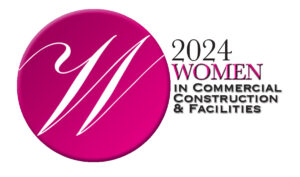Plastic injection molding is a complex process that involves the injection of molten plastic into an aluminum mold. Because of this, there are a wide variety of defects. In this listicle, we’ll discuss the top 13 plastic injection molding defects and how to fix them!
1) Warpage:
This occurs when the material changes shape during the cooling process. This typically happens with large, thin surfaces. The primary cause is from the injection mold’s cooling process, which can be controlled by choosing different cooling channels or adding fins.
2) Splash Marks:
These are minor defects that appear during the beginning of the shot (when molten plastic first starts to flow). They happen because there isn’t enough pressure in the system. This results in insufficient packing of the mold cavity, which leads to voids/excess material. To fix this, make sure that your machine is at the right pressure and pack each cavity thoroughly.
3) Short Shots:
These occur when there isn’t enough material entering the injection gates. The main cause for this is shrinkage (when plastic starts cooling down before it reaches the gates). To fix this, make sure that your machine is at the right temperature and speed.
4) Flow Lines:
These are lines along which plastic has flowed during injection molding. Normally they occur after the cooling time (when material solidifies before it leaves the gates). They can be fixed by slowing down injection speeds or increasing the mold temperature.
5) Blow Holes:
These are gas bubbles trapped in plastic during injection molding. They normally occur when your gate is too hot or you’re running out of material. In order to fix this, you need to ensure that your machine is up to the right pressure and pack each cavity thoroughly.
6) Wrinkles:
This happens when there is not enough clamp force or pressure applied to the material in order to mold properly. To fix this, you need to ensure that your machine is up to the right pressure and pack each cavity thoroughly.
7) Stretching/Shrinkage:
These are two different types of defects that indicate there was not enough travel distance within the machine. This can be fixed by checking your hydraulic pressure on the machine and ensuring that it is set to the right amount for your material.
8) Sink Marks:
These are depressions or dents in the surface of the final product. They occur because there wasn’t enough packing, material had air pockets or warping occurred. You can fix this by packing each cavity thoroughly and adjust your machine settings for the right materials.
10) Blisters:
These are bubbles of air pockets in the final product. They occur when the material gets trapped in one area and it can’t escape, so it creates a bubble or pocket of air. You can fix this by adding more flashing to your tool design and use a different material for blow molding. Blister also occurs when there is a lot of cooling time because the shrinking part will trap air and create a pocket.
11) Splits:
This is when there is a gap or split in the final product, which occurs when you have tight tolerances, warping occurs or tight draws from gates. You can fix this by making sure your tool design doesn’t have too tight tolerances and if the injection molding machine has too tight of a draw, you can add packing to your design.
12) Dirty material:
Sometimes, during the injection process, there can be residues on the tools which then transfer to the product. This occurs because of a dirty mold or a small gap in your tool design that allows for leakage. You can fix this by cleaning your tooling regularly and if there is dirt found, remove it immediately before it contaminates other parts.
13) Burn Marks:
Lastly, a burn mark is a black or brown streak that appears on the part or product. Again, this occurs because of tight tolerances and the fact that you may be running high temperatures in your tool. You should not run your machine hot nor reduce manufacturing speeds because it causes potential warping, which can cause other problems within the tool.
Conclusion
There you have it, the 13 unlucky plastic injection molding defects with how to fix them! Make sure your company is avoiding these pitfalls when designing your next product in order to make a better product! Thanks for reading.








 The 2024 virtual Men’s Round Table will be held Q4, 2024, date TBD.
The 2024 virtual Men’s Round Table will be held Q4, 2024, date TBD.













